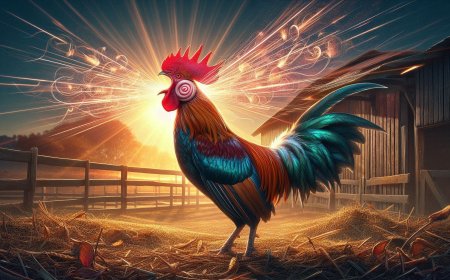The Curious Case of Kentucky’s Colorful Critter Law
Explore the curious case of Kentucky's Colorful Critter Law with a detailed look at the vibrant wildlife and unique legal insights surrounding this whimsical state regulation.

At first glance, some laws sound so absurd, you’d think they belong in a joke book. Yet, one of Kentucky’s "weird" laws floating around the internet is not only real but rooted in something more serious than meets the eye. In Kentucky, it’s illegal to dye fowl or rabbits different colors—and there’s a compelling reason why.
The Law: No Dye for Ducks (or Rabbits)
Let’s start with the facts. Kentucky Revised Statutes 436.600 outlines a peculiar yet strict law:
- It is illegal to dye or color any baby chicks, ducklings, or other fowl (or rabbits).
- You cannot sell, exchange, display, or possess these animals if they have been dyed or colored.
- Moreover, no one can sell or give away these animals under two months of age unless selling at least six at a time. But there’s an exception: if you’ve got a rabbit weighing three pounds or more, you can sell it at just six weeks of age.
Violating this law can lead to fines ranging from $100 to $500, making it clear that Kentucky takes its colorful critter laws seriously.
Why Such a Law?
You might wonder what could have prompted such an oddly specific law. The answer likely stems from a combination of animal welfare concerns and the prevention of impulsive pet purchases.
During holidays like Easter, brightly colored chicks and bunnies become temporary novelties. Vendors used to dye baby animals in eye-catching shades—imagine pink rabbits or neon green chicks—as festive gifts. They were cute, sure, but the reality was often far less charming. After the holiday, many of these animals were abandoned or neglected once their novelty wore off, leaving these poor creatures without proper care.
The law aims to curb this issue by preventing animals from being treated as seasonal accessories. By banning the sale of dyed animals and enforcing a minimum purchase quantity, Kentucky ensures that these animals are treated with the seriousness they deserve. The minimum six-animal rule also helps reduce the chances of impulse buys, encouraging people to think twice before bringing a bunch of ducklings or chicks home.
A Timely Law for Today’s World
While this law may sound like a relic of the past, it holds surprising relevance in today’s social media-driven world. Imagine how quickly a blue duckling would go viral on Instagram or TikTok! The quest for likes and shares could easily lead to impulsive purchases of brightly colored animals without proper consideration for their long-term care.
Though enacted long before social media existed, Kentucky’s quirky law remains a safeguard against these modern-day trends. It’s a reminder that while pets can be cute and fun, they also require responsibility and care.
Beyond the Bunny: The Bigger Picture
While the law may seem strange on the surface, its intent is clear: to protect animals from exploitation and ensure their well-being. Kentucky’s law joins a broader network of animal welfare regulations across the U.S., designed to prevent mistreatment and neglect.
By banning the dyeing of animals and regulating their sale, Kentucky is sending a message that animals are not mere objects to be bought, sold, and discarded on a whim. They are living creatures deserving of respect, care, and compassion.
So, while the idea of a rainbow-colored chick might sound like fun, Kentucky’s law ensures that behind the cute exterior lies a commitment to animal welfare, reminding us that when it comes to pets, novelty should never trump responsibility.
What's Your Reaction?






































































































